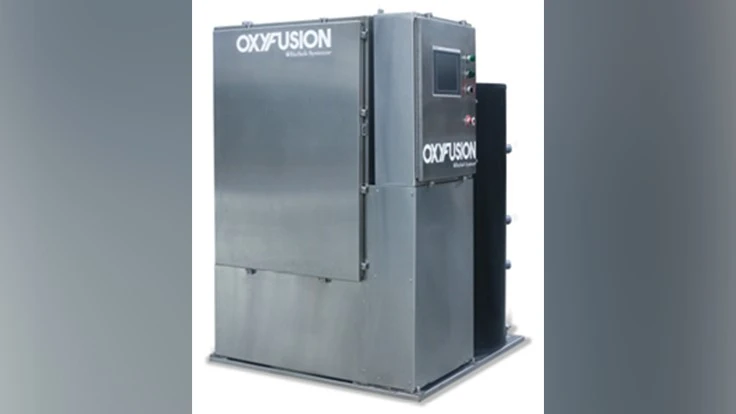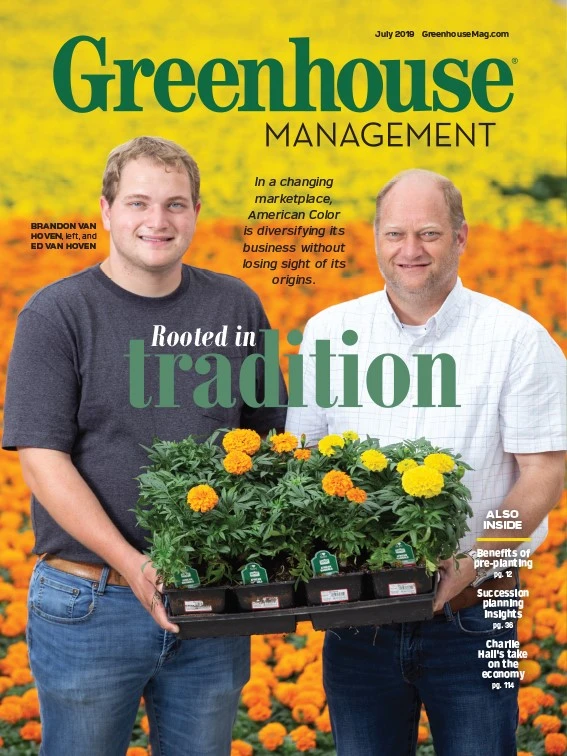
If you are a commercial ornamental grower, you probably feel like you are stuck between a rock and a hard place. On one side, you have increasing regulatory and consumer pressure to implement water conservation and run-off limits. On the other, expensive alternatives are needed to meet these expectations. Many greenhouses have turned to supplementing their irrigated water with municipal water to avoid the costly water conservation and sanitation alternatives. Research shows that this method is expensive, as municipal water is rapidly increasing in cost.
In a report conducted in 2015 by the American Society of Horticulture Science, it was found that the prices of municipal water have increased by 41% from 2010-2015, with incremental jumps in the rate at which the costs increase from year-to-year.
We at BioSafe Systems aim to address these issues with our SMART Technology. Through cloud-based data monitoring, controlling and water sanitation, OxyFusion, BioBuster and the PLC system are economical solutions designed to meet consumer and regulatory standards through unparalleled data reporting and sanitation.

OxyFusion® - On-Demand PAA
OxyFusion is a streamlined, technology-driven water sanitation system that provides an on-demand supply of Peroxyacetic acid (PAA). Through a proprietary reaction process, OxyFusion has the capability to deliver a wide range of PAA concentrations ranging from 15 – 2,000 parts per million (ppm). This provides unparalleled flexibility to greenhouse ornamental producers by allowing real-time changes to ppm concentrations based on changing irrigation water quality and level of contamination. OxyFusion’s ease of use is enhanced through its HMI Touchscreen Interface and Programmable Logic Controller (PLC), which allows limitless data-logging capabilities and expandable inputs. It also comes with rapid access to remote management and troubleshooting through live remote login capability via computer terminals, cell phones and tablets. OxyFusion is ideal for growing operations that cycle through large amounts of water on a daily basis. Its ability to manufacture PAA on-demand circumvents the need of regularly resupplying PAA. This, in addition to its PLC System, which monitors and data-logs PAA and water usage, makes OxyFusion an economical alternative to conventional systems.
_fmt.png)
SaniDate® Measuring & Dosing System (MDS) - Integrated Control and Monitoring System
SaniDate MDS, previously known as the BioBuster, monitors and integrates SaniDate®5.0 and SaniDate®12.0 into irrigation water treatment systems. Utilizing the same PLC system found in OxyFusion, SaniDate MDS provides real time datalogging of analyses and adjustments, as well as live remote management and login capabilities. SaniDate MDS is best used to address specific issues that come with certain application methods. These application methods and usage scenarios include: Micro-Irrigation Emitters, Drip Irrigation, Ebb-and-Flow Bench System, Flood Floor Irrigation, Rain Capture & Storage for Irrigation Use and Capturing Irrigation Water Run-Off. The SaniDate integrated by the SaniDate MDS treats various pathogens, microorganisms and other contaminants, including: Water Molds (Pythium & Phytophthora Species), Bacterial Inoculum, Virus, Algae, Biofilm, Nematodes and Insect Larvae.
Application Types and Needs
*Both OxyFusion and SaniDate MDS treat the issues associated with the following application methods. Contact your local BioSafe Systems’ representative to see which solution is right for your operation.
Micro-Irrigation Emitters
Micro-Irrigation Emitters apply small amounts of irrigation water and/or crop inputs using a circular emitter pattern aimed directly at the soil’s surface. Micro-emitters (i.e. micro-sprinklers) use a small-micron nozzle to apply a lower volume of water directly targeted at the root zone. Due to the small micron emitter size and varying quality of irrigation water, emitters frequently clog. The integration of PAA will clear this buildup of microorganisms and contaminants in the emitter lines.
Drip Irrigation (Including Spaghetti-Tubing Emitters)
Drip Irrigation is a type of micro-irrigation that can be elevated (drip lines) or used sub-surface (buried drip). This application utilizes low-flow emitters to irrigate water and/or chemigation of crop inputs targeted directly at a plant’s root zone. Much like other micro-irrigation methods, drip irrigation lines can easily clog. PAA integration will treat the same microorganisms found in Micro-Irrigation Emitters, which are responsible for the clogging of Drip Irrigation Lines.
Ebb-and-Flow Bench System
In an ebb-and-flow bench system, irrigation water stored in holding tanks is pumped to elevated indoor greenhouse benches connected via trough-type runways lined with container crops. The transfer of contaminants is HIGHLY PROBABLE as the water is recirculated through a closed irrigation system. In ebb-and-flow systems, plant infection is a serious concern as water molds thrive in the saturated root zones. Integrated PAA will control pathogens and various contaminants recirculated in the ebb-and-flow system.
Flood Floor Irrigation
In a flood floor irrigation system, irrigation water is pumped underneath the greenhouse sub-floor and percolates up through a concrete floor via slats/holes. The water is then taken up by the plant’s roots that are exposed to the openings on the underside of their containers. Similar to ebb-and-flow bench systems, contaminants are easily transferred to plants as the water is recirculated in a closed system where water molds thrive. Integrated PAA will control pathogens and various contaminants recirculated in the runway used in a flood floor irrigation system.
Rainwater Capture & Storage
Water is captured and diverted through gutters to holding tanks. With 1 inch of rainfall, an acre of a greenhouse can capture 10,840 gallons of water with an assumed 40% retention rate. Unless properly treated, this large amount of stored water can host a wide variety of pathogens and/or contaminants. The BioBuster and OxyFusion can inject, measure and data-log PAA directly into rainwater storage tanks, controlling the pathogens contaminating the water.
Capturing Irrigation Water Run-Off
Capturing irrigation water run-off involves recycling the irrigation water (source water can vary) using a reclamation or run-off capture system that returns excess irrigation water (including the residual fertilizer, pesticides, etc.) to a holding tank or surface pond. Unless properly treated, contaminants can be found in the irrigation water run-off. The BioBuster and OxyFusion will treat the water with varying amounts of PAA controlled by the user.
_fmt.png)
Programable Logic Controller (PLC) – Data Monitoring and Capture
The PLC System is an all-in-one data monitoring and capturing system that works synergistically with our OxyFusion and BioBuster technology. Offering real-time data collection and manipulation, the PLC system pulls data from the BioBuster and/or OxyFusion and stores it in the BioSafe Cloud. The PLC System’s remote accessibility allows users to view data in real-time and control application variables via mobile app or browser. Its customizable dashboard allows users to readily access information relevant to their specific operation. Additionally, users can receive customized emailed reports that show timelines and relevant data, as well as receive alarms via text or email.
Why Peroxyacetic Acid (PAA)?
For over 20 years, BioSafe Systems has been providing the Greenhouse and Ornamental industry with proprietary PAA products that fit easily and harmoniously into any program. With its impressive results, years of peer-reviewed research and customer satisfaction, PAA is a step above conventional disinfecting solutions.
Strong Oxidizer
PAA is a catalyst for oxidation, which offers a complete kill of pathogen spores/cells over conventional alternatives. It attacks pathogens on contact, giving them no time to develop a resistance. In comparison to hydrogen peroxide, PAA offers more oxidizing potential at many concentration rates; 1:1,000, 1:500, 1:200 and 1:100 respectively. Compared to chlorine, PAA is a more effective and efficient microbial kill.
Versatile
Peroxyacetic Acid works in a variety of temperatures and pH levels, and is compatible with most materials. Chlorine requires specific pH levels for it to properly clean recirculated water.
Safe and Environmentally Friendly
Peroxyacetic Acid is a much safer alternative to harsher chemical solutions. PAA is biodegradable and converts to carbon dioxide, oxygen and water upon oxidation. Unlike chlorine, PAA does not turn into a gaseous state under any circumstances. The half-life of PAA means that is not persistent and rarely needs to be neutralized prior to discharge. Additionally, PAA scores high on the sustainability index as it produces no waste when manufactured and applied.
Through continued engagement with regulatory agencies, researchers and consumers, we at BioSafe Systems strive to remain at the forefront of service and innovation. Our Smart Technology is a modernized approach to meeting regulatory and consumer needs while cutting costs associated with standard water conservation and recycling methods. Paired with our powerful PAA chemistry, BioSafe Systems’ Smart Technology lineup is a cutting-edge and economical solution for commercial ornamental growers everywhere.

Explore the July 2019 Issue
Check out more from this issue and find your next story to read.
Latest from Greenhouse Management
- Anthura acquires Bromelia assets from Corn. Bak in Netherlands
- Top 10 stories for National Poinsettia Day
- Langendoen Mechanical hosts open house to showcase new greenhouse build
- Conor Foy joins EHR's national sales team
- Pantone announces its 2026 Color of the Year
- Syngenta granted federal registration for Trefinti nematicide/fungicide in ornamental market
- A legacy of influence
- HILA 2025 video highlights: John Gaydos of Proven Winners





